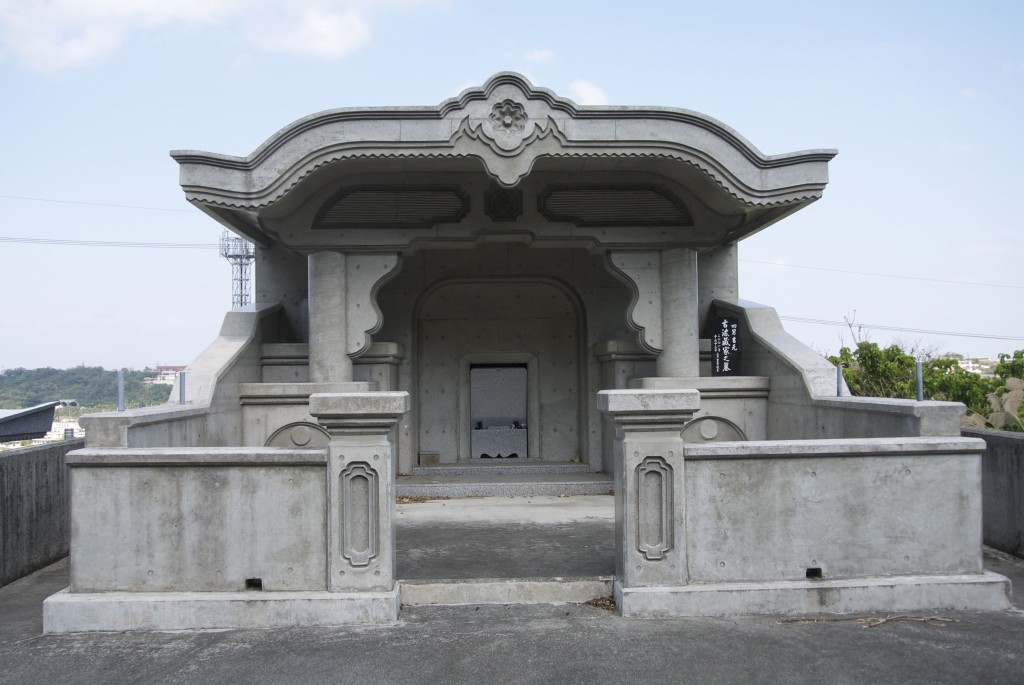
Okinawan family tomb
Driving around Okinawa, one can’t help noticing the many distinctively large tombs. They resemble small houses, with a porch and courtyard. Some are turtle shaped and nestle into the slope of the earth, as if wombs. The dead who are buried here will be reborn in spirit form.
For Lafcadio Hearn, ancestor worship was not only the defining characteristic of religion throughout East Asia, but the origin of religion in all countries. In early societies ghosts were regarded as the spirits of dead family members, who were honoured as immortal beings with the power to protect and punish. In this way ghosts became gods.
In the case of Okinawa, treasuring the memory of past generations is given expression both within the house in the form of a family altar and outside in the form of family graves. The altar, known as a buchudan, is ostensibly Buddhist but contains no buddhas. Instead it houses memorials of the deceased.
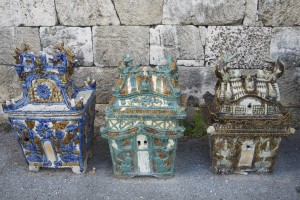
Funeral urns
After death, the cremated remains of the deceased are placed in funeral urns and taken to the family tomb. Twice a year prayers and offerings are made there by the extended family of descendants. The gatherings can be sizable, involving anything up to thirty or more. Offerings are made of rice, water and saké. Expressions of gratitude are given, as well as solicitations for blessings. Afterwards food and drink are shared between the living and the dead, much as in the manner of a wake.
Though ancestor worship has been carried out in some form or other since ancient times, the large tombs used now were not introduced until the seventeenth century, influenced by the customs of south China. The oldest tomb dates back to 1687, and in former times the deceased were carried to the grave in a form of palanquin called ‘gan’. Once a mere mortal, the family member had passed over into the form of a higher being.
How many urns are kept within the family tomb, I couldn’t hep wondering? When I asked a friendly waiter about it, he told me that in his family at least the tradition was to keep as many urns as possible within the tomb, and that when there was no more space the oldest would be smashed up and the contents mixed into the floor of the tomb. Dust returns to dust, but within the safekeeping of the family.
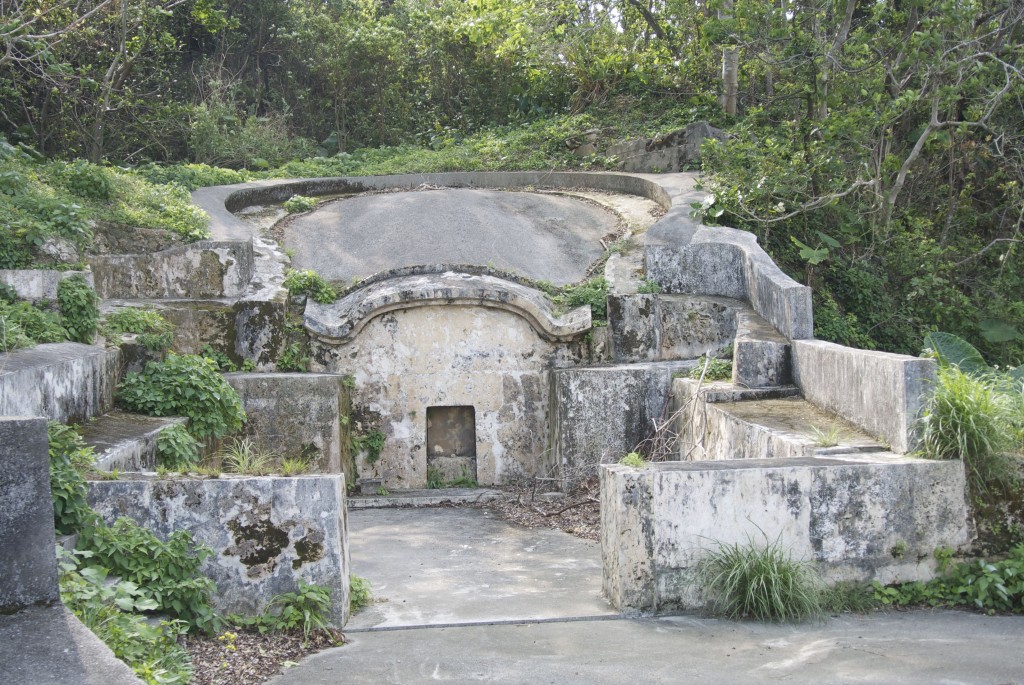
Traditional tortoise-shaped tomb, built womb-like into the side of the hill
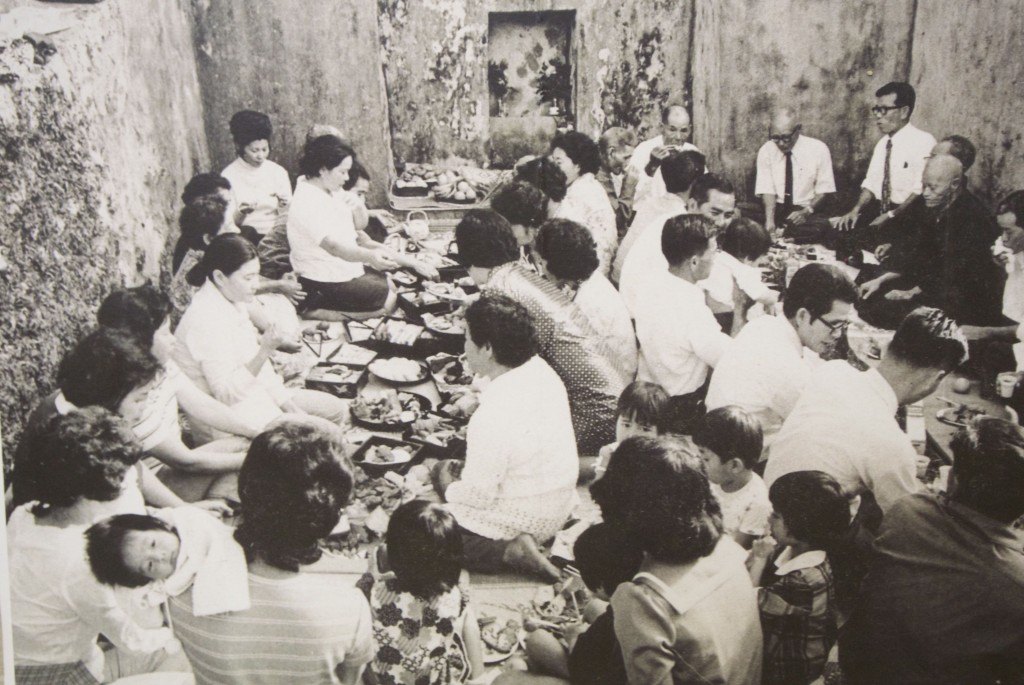
Gathering of an extended family at an ancestral tomb (picture in Nakajin Castle museum)
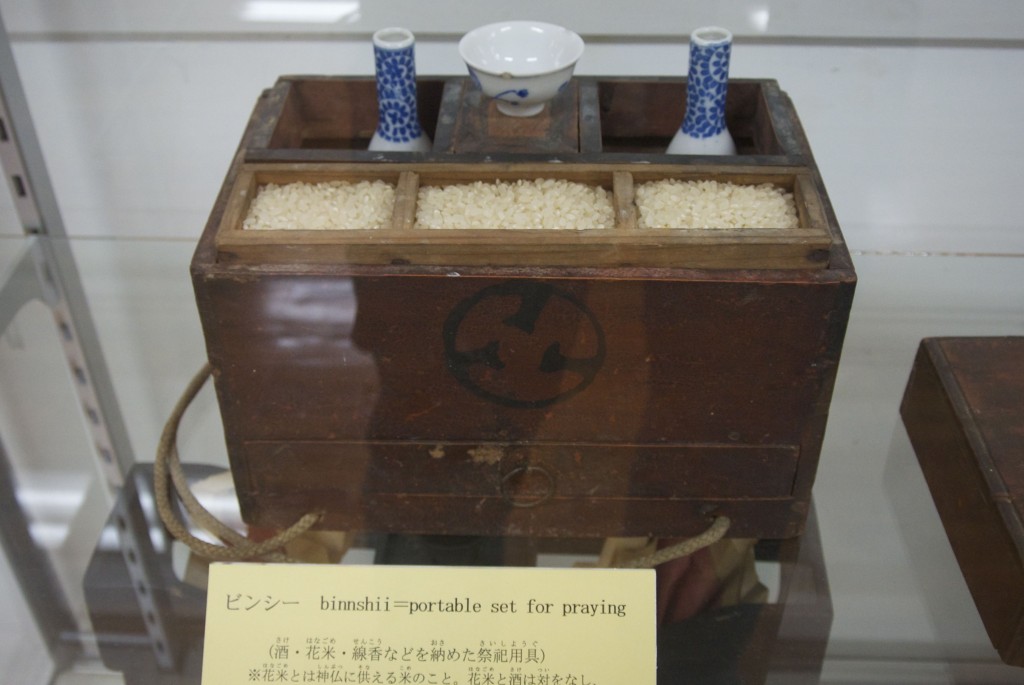
Portable offering set used at rituals before the ancestral tomb
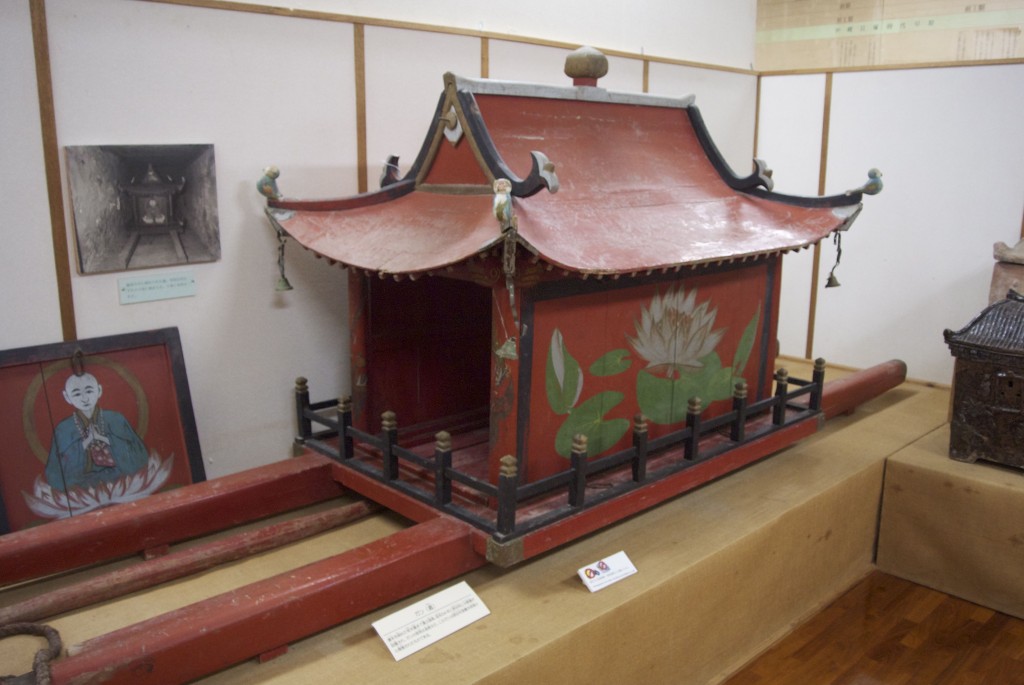
Traditional palanquin used up to Meiji times for carrying the dead to the family tomb
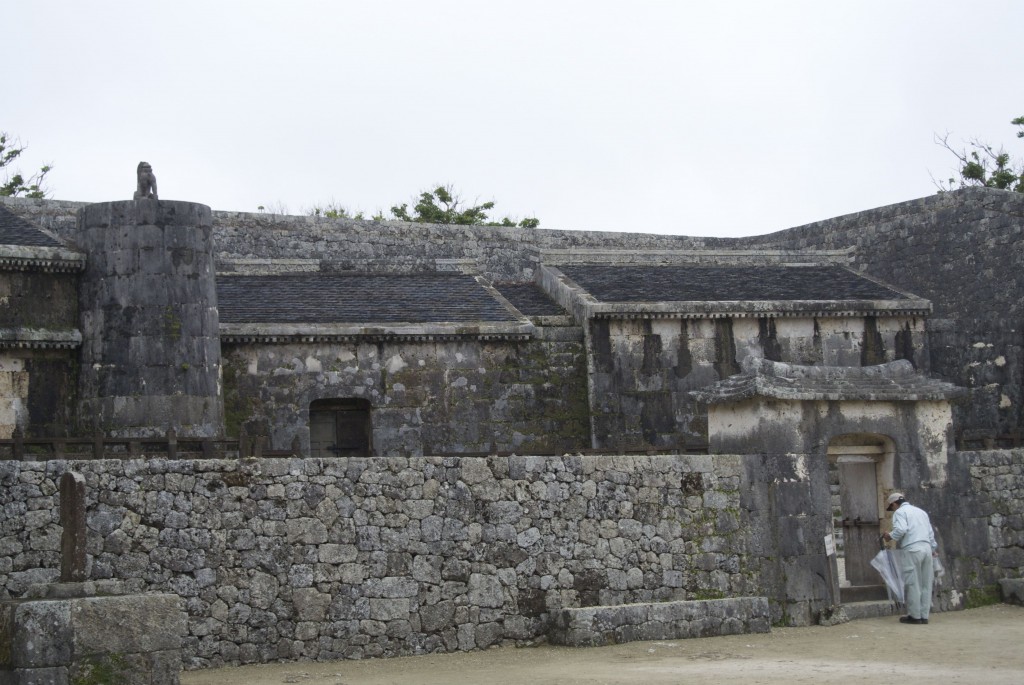
Paying respects at Tama-u-dun, a World Heritage site and mausoleum of the Ryukyu kings

These photos are beautiful. I am making a video for a fundraiser for a ceremony called “Night Turtle Dance” – it is non-profit, and the ceremony honors the ancient turtle, and the Earth.
May I use the Turtle Tomb image for the video. We are trying to show how turtle is honored in many ways, many culture and for 1000’s of years.
Please let me know. I thank you kindly.
Amy
You’re welcome! The turtle and crane islands in the Horai gardens of Zen temples here in Kyoto make a special study all of their own…